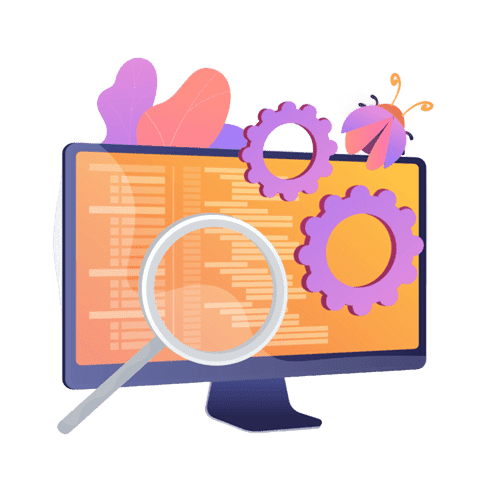Preparing for a process audit involves structured planning, clear communication, and employee engagement. Key practices include maintaining audit readiness, conducting pre-audit assessments, using process mapping tools, and ensuring proper documentation control. Engaging process owners and fostering continuous improvement enhances audit success while addressing common challenges like resource constraints and stress.
Revolutionizing Automotive Testing with Evidence-Based Software Engineering
Discover how automotive software testing processes can be enhanced using Evidence-Based Software Engineering (EBSE). This approach identifies key challenges, integrates industry best practices, and leverages empirical evidence to improve testing efficiency, quality, and compliance. Learn actionable strategies to streamline testing, manage requirements, automate processes, and ensure high safety standards in automotive software development.

The automotive industry, known for its complex systems and high safety requirements, relies heavily on rigorous software testing processes to ensure the reliability and safety of its products. However, the traditional methods of software testing often face challenges related to process efficiency, test coverage, and adaptability to evolving requirements. This post delves into how Evidence-Based Software Engineering (EBSE) can be applied to automotive software testing to address these challenges, optimize the process, and enhance overall product quality.
EBSE is a methodology that integrates empirical evidence into software engineering practices, helping organizations make informed decisions about technology and process improvements. This approach is beneficial for industries like automotive, where safety, reliability, and compliance are critical.
Understanding Automotive Software Testing
Automotive software testing involves various test levels, including unit testing, integration testing, system testing, and acceptance testing. Each level aims to ensure that individual components, their interactions, and the system as a whole function correctly under specified conditions. The following are key characteristics that define automotive software testing:
1. Heterogeneous Subsystems
Modern vehicles integrate multiple subsystems, including multimedia, telematics, safety electronics, and powertrain controls. Each subsystem may use different development tools, methodologies, and standards, leading to diverse testing requirements.
2. Complex Interactions
With the increasing connectivity of automotive systems, ensuring seamless interaction among subsystems is crucial. This complexity requires comprehensive integration testing and real-time simulations.
3. High Configurability
Automotive software often needs to accommodate numerous configurations due to various model options, regional regulations, and customer-specific requirements. This variability makes comprehensive testing a challenging task.
4. Stringent Safety Standards
Automotive software must comply with safety standards such as ISO 26262, which dictate rigorous testing protocols to ensure functional safety.
%
Automotive software complexity
Automotive software complexity has increased by over 300% in the last decade, with modern cars containing more than 100 million lines of code, making thorough testing essential for safety and reliability. Source: McKinsey & Company, 2021
%
cost of software development
Up to 40% of the total cost of software development in the automotive industry is attributed to testing, emphasizing the critical need for efficient and optimized testing processes. Source: Capgemini, World Quality Report, 2020
Challenges in Automotive Software Testing
Based on the case study of a Swedish automotive company, several challenges in the automotive testing process were identified:
1. Lack of a Unified Test Process
Different projects within the organization used varying test methodologies and tools, leading to inconsistency in testing practices. This inconsistency can compromise the quality and comparability of test results.
2. Time and Cost Constraints
Limited resources often result in inadequate time allocated for thorough testing, leading to rushed testing phases that may overlook critical defects.
3. Requirements Volatility
Changes in requirements during the development cycle can lead to frequent test plan revisions, causing delays and potential gaps in test coverage.
4. Resource Constraints
A shortage of skilled testers and the unavailability of testing personnel can hinder the execution of effective testing strategies.
5. Knowledge Management
The lack of structured knowledge transfer mechanisms leads to inefficiencies, especially when new testers are onboarded or when experienced testers leave the project.
6. Test Automation Issues
Insufficient automation of test cases leads to rework and increased manual testing efforts, which are time-consuming and prone to human error.
Applying EBSE to Improve Automotive Testing Processes
To address these challenges, the EBSE process provides a structured approach to identify, evaluate, and implement evidence-based improvements. The following steps outline how EBSE can be applied to enhance automotive software testing:
1. Identifying the Need for Information
The first step involves conducting a thorough analysis of the current testing process to identify pain points, inefficiencies, and areas that need improvement. This can be achieved through case studies, interviews with stakeholders, and reviewing existing process documentation.
2. Systematic Literature Review
Once the challenges are identified, a systematic literature review (SLR) is conducted to gather evidence on potential solutions. The SLR focuses on finding empirical studies that offer insights into best practices, tools, and methodologies relevant to automotive software testing.
3. Critical Appraisal of Evidence
The collected evidence is critically appraised to assess its relevance, quality, and applicability to the specific context of the automotive testing process. This involves evaluating the effectiveness of proposed solutions in real-world settings, particularly within the automotive industry.
4. Implementing Improvements
Based on the appraised evidence, a value stream mapping approach is used to redesign the testing process. This involves mapping out the current state of the testing process, identifying value-adding activities, eliminating waste, and proposing a future state that incorporates the identified improvements.
5. Reflection and Continuous Improvement
The final step is to reflect on the effectiveness of the implemented changes and make adjustments as needed. This involves continuous monitoring of the testing process, collecting feedback from stakeholders, and updating practices based on new evidence.
Proposed Improvements for Automotive Testing
1. Adopting Unified Testing Standards
Establishing a standardized testing framework across projects can help achieve consistency and improve the quality of testing. Standards such as ISO 26262 provide guidelines for functional safety and can serve as a benchmark for developing organization-specific testing protocols.
2. Enhancing Test Automation
Investing in test automation tools and frameworks can reduce manual testing efforts, increase test coverage, and enable faster feedback cycles. Automated regression testing, in particular, can help ensure that new changes do not introduce defects into previously stable components.
3. Implementing Agile Practices
Incorporating agile methodologies can help address requirements volatility by enabling iterative development and testing. Agile practices such as continuous integration and regular stakeholder collaboration can improve communication, ensure timely identification of issues, and facilitate quicker responses to changes.
4. Improving Requirements Management
Clear and detailed requirements are crucial for effective testing. Techniques such as early simulations, use case modeling, and requirements traceability can help ensure that testing aligns with customer needs and regulatory requirements.
5. Fostering Knowledge Sharing
Establishing structured knowledge management practices, such as regular training sessions, workshops, and documentation, can enhance knowledge transfer among team members. This is particularly important for complex automotive systems that require specialized testing expertise.
6. Optimizing Resource Allocation
Implementing better resource management practices can ensure the availability of skilled testers when needed. This may involve cross-training team members, hiring dedicated testers, and using project management tools to track resource allocation.
7. Enhancing Defect Management
Introducing robust defect management tools and practices can help track and prioritize defects, ensuring that critical issues are addressed promptly. Early defect detection and efficient root cause analysis can reduce the cost and time associated with defect resolution.
Conclusion
The application of Evidence-Based Software Engineering to automotive testing processes offers a systematic and empirical approach to process improvement. By leveraging evidence from industry best practices and academic research, automotive companies can enhance their testing processes, improve product quality, and ensure compliance with safety standards. Continuous reflection and adaptation of the testing process are key to staying ahead in the dynamic automotive industry, where software complexity and safety requirements are ever-increasing.
Implementing the proposed improvements not only optimizes the testing process but also aligns it with the overall goals of the organization, ensuring the delivery of high-quality, reliable, and safe automotive software.
References
- Kasoju, A., Petersen, K., Mäntylä, M. V. (2013) – Analyzing an Automotive Testing Process with Evidence-Based Software Engineering. Information and Software Technology, 55, 1237-1259.
- McKinsey & Company (2021) – The Growing Complexity of Automotive Software: How to Stay Ahead.
- Capgemini, World Quality Report (2020) – Software Testing in the Automotive Industry: Ensuring Quality in a Software-Driven World.
- ISO 26262 (2018) – Road vehicles – Functional safety – International standard for ensuring the safety of automotive electronic systems.
- Grimm, K. (2003) – Software Technology in an Automotive Company – Major Challenges. International Conference on Software Engineering (ICSE).
- Kitchenham, B. (2004) – Procedures for Performing Systematic Reviews. Keele University Technical Report TR/SE-0401.
- Puschnig, T., Kolgari, S. (2009) – Competence Management in Automotive Software Testing. Automotive Testing Expo Europe.
Wanna know more? Let's dive in!
Process Audits Explained: A Comprehensive Guide
Process audits are systematic evaluations of organizational processes to ensure compliance, efficiency, and effectiveness. They identify areas for improvement, mitigate risks, and ensure regulatory compliance. This guide explores types, methodologies, benefits, and challenges of process audits, providing a comprehensive understanding of their role in enhancing operational performance.
Step-by-Step Process for Passing Your First ISO Audit with Flying Colors
Preparing for your first ISO audit? This step-by-step guide breaks down everything from documentation and employee training to internal audits and corrective actions. Follow these essential steps to ensure you pass your ISO audit with flying colors and achieve certification success. Start your ISO journey today!
How Technology is Revolutionizing ISO Audits: Digital Tools for Compliance
Digital tools and audit management software are transforming ISO audits by improving accuracy, efficiency, and compliance. Automation, centralized data management, and AI-driven analytics streamline processes, reduce errors, and enhance risk management, making ISO audits more manageable and future-ready for organizations aiming to maintain certification.
What to Expect During an ISO Surveillance Audit: Staying Compliant Year-Round
ISO surveillance audits are essential for maintaining certification and ensuring compliance with international standards. This guide outlines what to expect during these audits, the importance of continuous improvement, and strategies for year-round ISO compliance, helping businesses pass audits effortlessly while enhancing operational efficiency and customer satisfaction.
Top 10 Benefits of Conducting Regular Internal Audits
Conducting regular internal audits before ISO certification offers numerous benefits, including early detection of nonconformities, streamlined audit processes, improved documentation, and cost savings. These audits foster continuous improvement, enhance risk management, boost organizational efficiency, and ensure long-term compliance, setting the foundation for successful ISO certification.
The Ultimate Guide to Preparing for an ISO Audit
Preparing for an ISO audit can be challenging, with common mistakes like poor documentation, insufficient internal audits, and lack of leadership involvement. This guide explores these pitfalls and offers expert tips, an audit readiness checklist, and strategies to ensure a smooth path to successful ISO certification.
Comprehensive Overview of Different Types of Audits
We explore various types of audits, including system, human error, clinical, cybersecurity, and business continuity audits. Each audit plays a unique role in ensuring compliance, improving efficiency, and reducing risks across different industries, helping organizations achieve their quality, safety, and operational goals.
Online Networking and Individual Development: A Deep Dive
Online networking enables global collaboration, transcending geographic limitations for personal and professional development. Through models like T-learning, I-learning, M-learning, and N-learning, individuals engage in knowledge sharing and growth. Effective e-moderation, scaffolded learning, and addressing challenges ensure productive and enriching online development experiences.
Networking and Innovation
Networking plays a crucial role in fostering innovation by enabling firms to share knowledge, access new markets, and pool resources. This article explores how diverse networks, including formal alliances and informal relationships, contribute to innovation while highlighting challenges such as network complexity and potential failures.
Developing a Comprehensive Networking Strategy
Developing a strategic networking plan is crucial for career advancement. By setting clear goals, identifying key contacts, and maintaining meaningful relationships, professionals can unlock hidden opportunities, enhance their brand, and foster valuable collaborations that support long-term growth. Networking is an ongoing process essential for sustained career success.
Networking at Events
Networking is essential for career growth. Success lies in preparation, active engagement, and thoughtful follow-up. By mastering these strategies, you can create meaningful connections at any event, opening doors to opportunities and collaborations that can significantly impact your professional trajectory.












